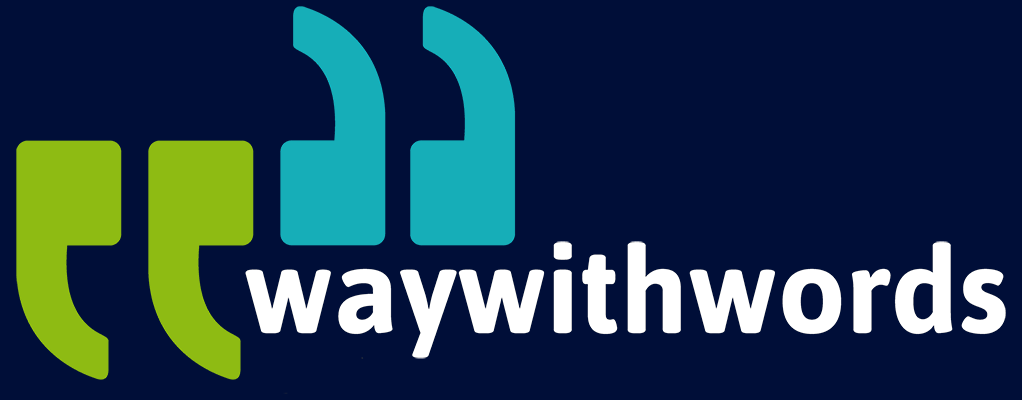What Is Semi-Supervised Collection in Speech Data?
Designing an Effective Semi-supervised Speech Data Pipeline
Speech recognition technologies have advanced rapidly in recent years, driven by the growing demand for applications such as voice assistants, transcription services, and conversational AI – some even created using synthetic voices. At the heart of these technologies is speech data: vast collections of recorded audio paired with accurate transcriptions. However, building datasets for training speech models is both time-intensive and expensive, especially when manual labelling is required at scale. This is where semi-supervised collection in speech data comes into play.
Semi-supervised approaches balance the use of labelled and unlabelled audio to create powerful training pipelines that speed up model development while keeping costs manageable. For data scientists, ASR engineers, and language researchers, understanding this balance is key to unlocking scalable, high-quality speech AI.
This article explores the fundamentals of semi-supervised learning in speech data collection, why it is used, how to build effective pipelines, available toolkits, and the main challenges in quality assurance.
What Is Semi-supervised Learning in Speech AI?
Supervised learning relies on fully labelled data: every piece of audio must be transcribed accurately before being used for model training. Unsupervised learning, on the other hand, discards labels altogether and looks for patterns in raw audio signals. Semi-supervised learning strikes a middle ground between these two extremes.
In a semi-supervised speech data setup, a portion of the dataset is labelled by humans, while a much larger portion remains unlabelled. A machine learning model is initially trained on the labelled data, and then used to generate pseudo-labels for the unlabelled audio. These pseudo-labelled samples are added back into the training pool, gradually expanding the dataset and improving the model’s performance.
This approach makes sense in speech AI because:
- High-quality labelled audio is expensive and slow to produce.
- Unlabelled audio is widely available, especially in new or low-resource languages.
- Modern ASR models are robust enough to generate pseudo-labels that, even if imperfect, can provide valuable training signals.
The success of semi-supervised learning in speech rests on the hybrid nature of the process: labelled data grounds the model in accuracy, while unlabelled data helps generalise across accents, environments, and speaking styles. This blend allows models to achieve levels of performance that would be prohibitively costly with fully supervised learning alone.
In practical terms, labelled vs unlabelled audio is not an either/or choice—it is a spectrum. Semi-supervised collection leverages both sides of this spectrum to create training pipelines that scale without sacrificing too much accuracy.
Why Semi-supervised Collection Is Used
One of the biggest drivers for semi-supervised speech data collection is the cost of labelling. Transcribing thousands of hours of speech manually is both time-consuming and financially demanding. Each audio file must be annotated with precise word-level detail, often requiring native speakers with domain knowledge. For new languages or technical fields, these labour costs increase significantly.
Semi-supervised collection addresses this challenge by reducing the proportion of audio that requires full human labelling. Instead of transcribing 100% of the dataset, engineers can focus on carefully labelling a smaller portion, such as 10–20%. This core labelled set provides the foundation for the model, which then expands its knowledge by processing unlabelled speech.
Other reasons why semi-supervised collection is widely used include:
- Faster corpus building: By leveraging unlabelled audio, large datasets can be assembled quickly, which is essential for rapidly evolving domains like customer service or eLearning.
- Domain adaptation: When building speech models for specialised industries—such as healthcare, law, or finance—semi-supervised methods help extend coverage without waiting for exhaustive manual labelling.
- Language coverage: Many languages, especially those considered low-resource, lack sufficient labelled datasets. Semi-supervised learning enables models to bootstrap from small labelled corpora while drawing on abundant unlabelled speech recordings.
- Improved generalisation: Semi-supervised pipelines expose models to diverse and noisy data, helping them adapt to real-world conditions such as background noise, overlapping speech, or regional accents.
In essence, semi-supervised speech data collection is not simply a compromise between quality and cost. It is a deliberate strategy to make AI voice training hybrid: part human precision, part machine scalability.
How to Implement a Semi-supervised Pipeline
Designing an effective semi-supervised speech data pipeline involves several interlocking components. The goal is to balance automation with human oversight to ensure the pseudo-labels generated by models remain accurate enough for training.
Key steps include:
- Start with a labelled seed dataset: Begin by curating a small but high-quality set of transcribed audio. This acts as the foundation of the training process. The better the quality of this seed data, the more accurate the initial model will be.
- Train a base model: Use the labelled dataset to train an initial ASR model. This model will not yet be perfect but will be capable of generating pseudo-labels on unlabelled data.
- Apply pseudo-labelling: Run the base model on unlabelled audio and generate transcriptions. Each transcription comes with a confidence score indicating how sure the model is about its output.
- Filter by confidence: Retain only those pseudo-labels above a defined confidence threshold. This step prevents error propagation by discarding low-quality auto-transcriptions.
- Human-in-the-loop correction: A portion of pseudo-labelled data should be reviewed and corrected by human annotators. This ensures that systematic errors are identified early, and the corrected data can be fed back into the training loop.
- Retraining loops: Combine the corrected pseudo-labels with the original labelled dataset, and retrain the model. Iteratively repeating this process allows the model to improve steadily over time.
- Monitoring and evaluation: Regularly evaluate the updated model on a held-out test set. Key metrics include Word Error Rate (WER), accuracy across different accents, and robustness in noisy environments.
Implementing such a pipeline requires balancing automation with manual quality control. A fully hands-off approach risks amplifying mistakes, while too much human correction negates the efficiency benefits. The most successful systems integrate confidence scoring, human-in-the-loop processes, and retraining cycles into a repeatable workflow.

Use Cases and Toolkits
Semi-supervised collection has become central to modern speech AI projects, especially those requiring rapid scaling across domains and languages. Several use cases demonstrate its impact:
- Low-resource languages: Semi-supervised methods allow the development of ASR systems for African, Asian, and indigenous languages where labelled corpora are scarce.
- Customer support AI: Contact centres use semi-supervised pipelines to adapt general ASR models to specific customer service domains.
- eLearning and education: Speech models tailored to online education platforms can quickly adapt to subject-specific terminology using semi-supervised techniques.
- Healthcare transcription: Medical datasets often contain sensitive and technical language. Semi-supervised approaches allow models to expand their understanding without requiring full manual transcription of every recording.
Several open-source frameworks support AI voice training hybrid approaches:
- Kaldi: A powerful toolkit for speech recognition research that supports active learning and semi-supervised workflows.
- wav2vec (Facebook AI): Pre-trained speech representations that can be fine-tuned with small labelled datasets, making it ideal for semi-supervised pipelines.
- Active learning frameworks: These allow prioritisation of data samples that are most informative, ensuring human correction efforts are spent where they matter most.
These tools, when combined with semi-supervised collection strategies, provide a scalable pathway for building ASR models that are both accurate and cost-effective.
Challenges in Quality Assurance
While semi-supervised learning offers clear benefits, it introduces unique challenges in quality assurance. Unlike fully supervised pipelines, where every training sample is verified, semi-supervised workflows carry the risk of introducing systematic errors into the dataset.
Key challenges include:
- Label drift: Over time, pseudo-labelling may reinforce errors, especially if the model develops biases toward certain accents, dialects, or phrases.
- Error propagation: Once low-quality pseudo-labels are added to the dataset, they can distort the training process, making errors harder to correct in later cycles.
- Monitoring human corrections: Human-in-the-loop processes need oversight to ensure consistency among annotators. Without guidelines, different annotators may introduce variability that confuses the model.
- Balancing efficiency with accuracy: Too strict a confidence threshold may waste potentially useful unlabelled data, while too lenient a threshold risks amplifying errors.
- Domain mismatch: Pseudo-labels generated on data from one domain (e.g., casual speech) may not transfer well to another (e.g., legal transcription).
To address these challenges, semi-supervised pipelines must include strong evaluation metrics and regular audits. Test sets should be diverse, covering multiple accents, speaking styles, and noise levels. Annotation guidelines should be clear, and inter-annotator agreement should be measured regularly.
Ultimately, quality assurance in semi-supervised collection is about maintaining the balance between scalability and reliability. Without this balance, the benefits of speed and cost reduction can quickly be undermined.
Final Thoughts on Semi-supervised Speech Data
Semi-supervised collection in speech data represents a powerful evolution in how speech recognition systems are trained. By blending labelled and unlabelled audio, it allows engineers and researchers to build models faster, cheaper, and across more diverse domains. At the same time, the hybrid nature of this approach requires careful attention to quality assurance, human oversight, and retraining loops.
For data scientists, startups, and researchers in speech AI, semi-supervised methods provide a scalable path forward, especially for low-resource languages and emerging applications. The future of speech AI will increasingly depend on these hybrid strategies, as demand for accurate, real-world-ready models continues to grow.
Resources and Links
Wikipedia: Semi-Supervised Learning – This article provides an accessible introduction to the concept of semi-supervised learning, describing its theoretical foundations, strategies, and why balancing labelled and unlabelled data is central to many machine learning fields, including speech recognition.
Way With Words: Speech Collection – Way With Words offers professional speech collection services tailored for AI development, linguistic research, and speech technology companies. Their expertise includes multilingual datasets, customised data collection, and rigorous quality control to ensure reliable inputs for AI voice training. By supporting clients across industries, they make semi-supervised and supervised approaches more effective through high-quality speech data sourcing.
